Independently powered interactive device holder
Eshelman , et al.
U.S. patent number 10,653,018 [Application Number 16/160,642] was granted by the patent office on 2020-05-12 for independently powered interactive device holder. This patent grant is currently assigned to 360 Electrical, L.L.C.. The grantee listed for this patent is 360 Electrical, L.L.C.. Invention is credited to Cameron Bigler, Adam Boushley, Brandon Eshelman.
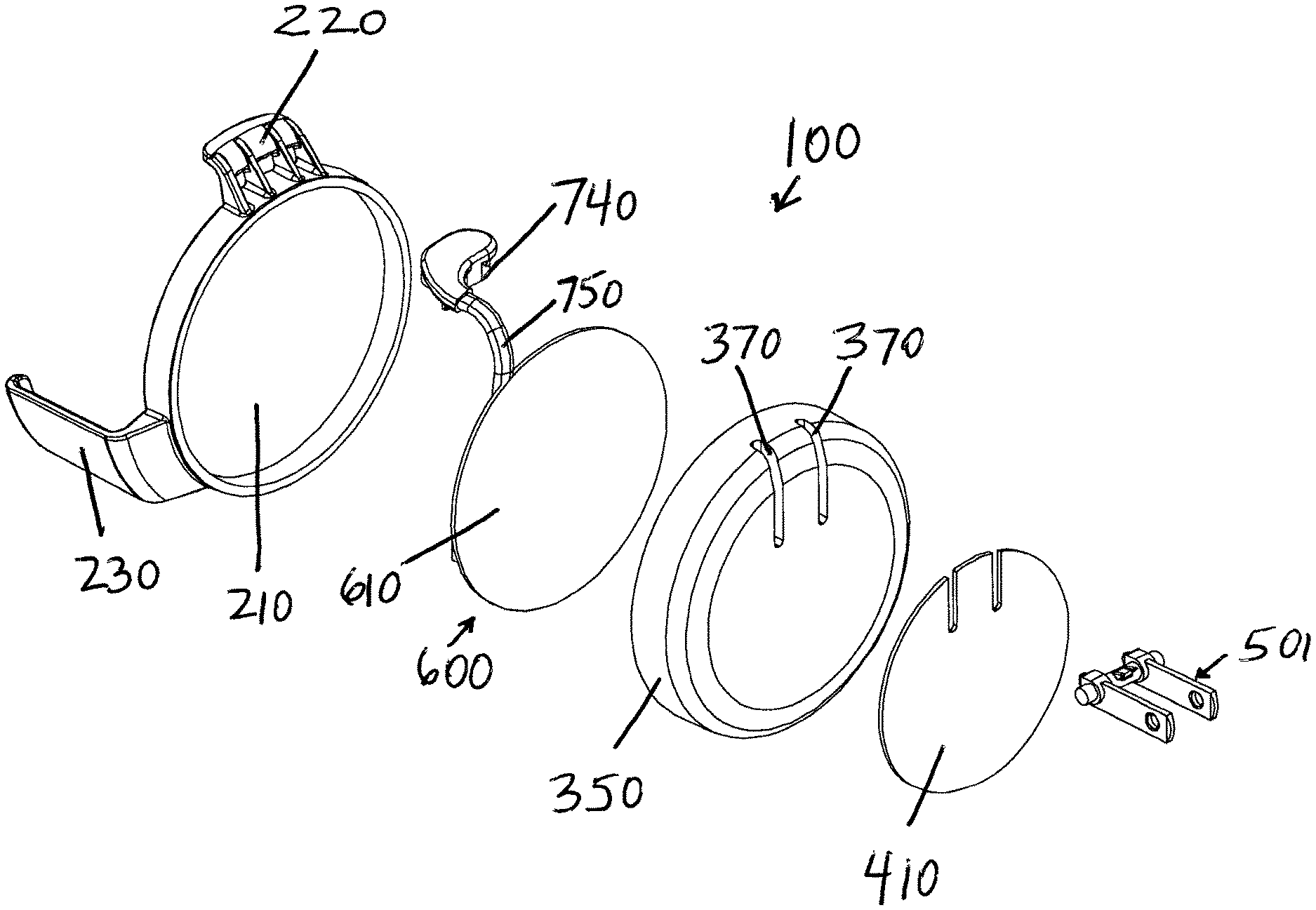
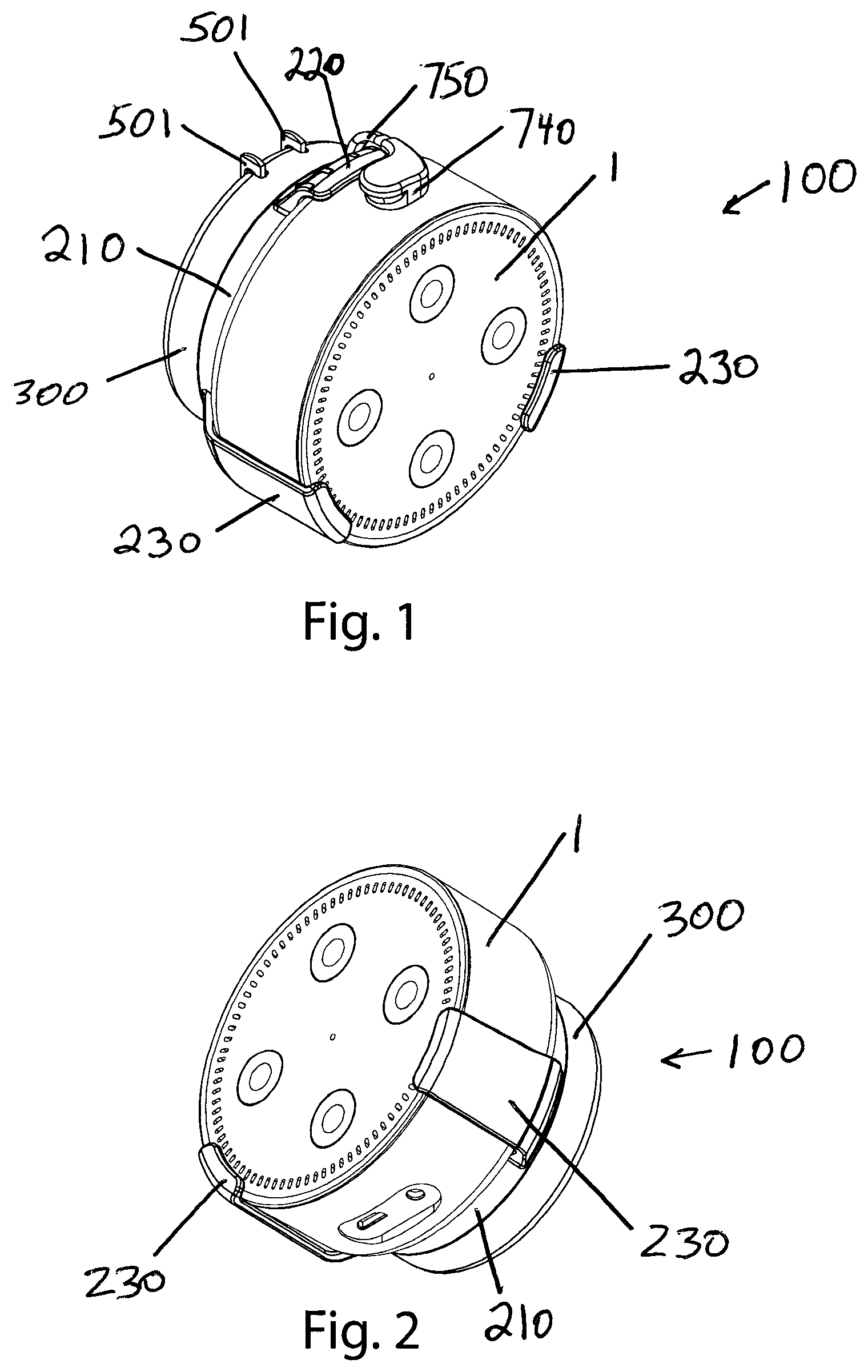
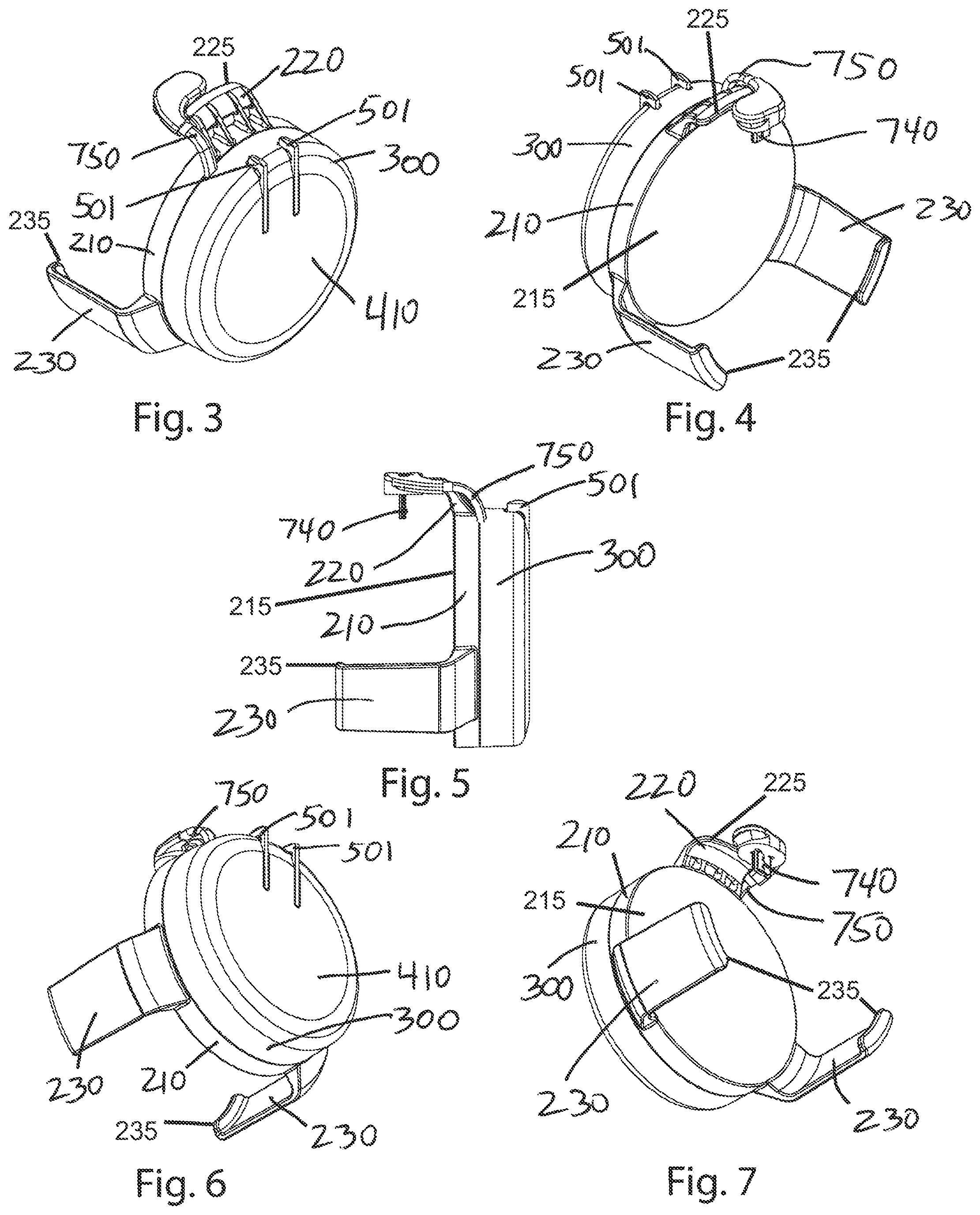
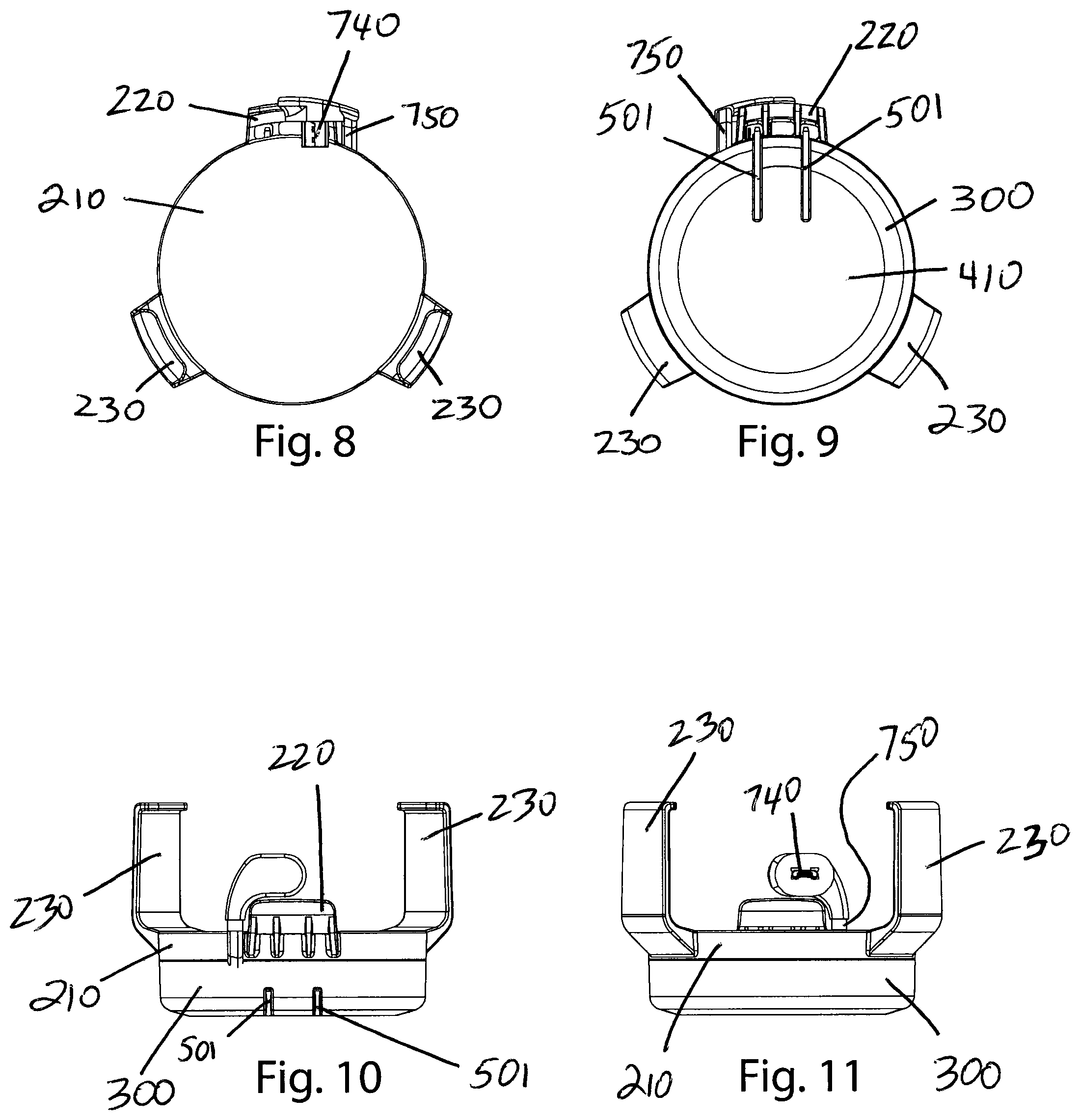
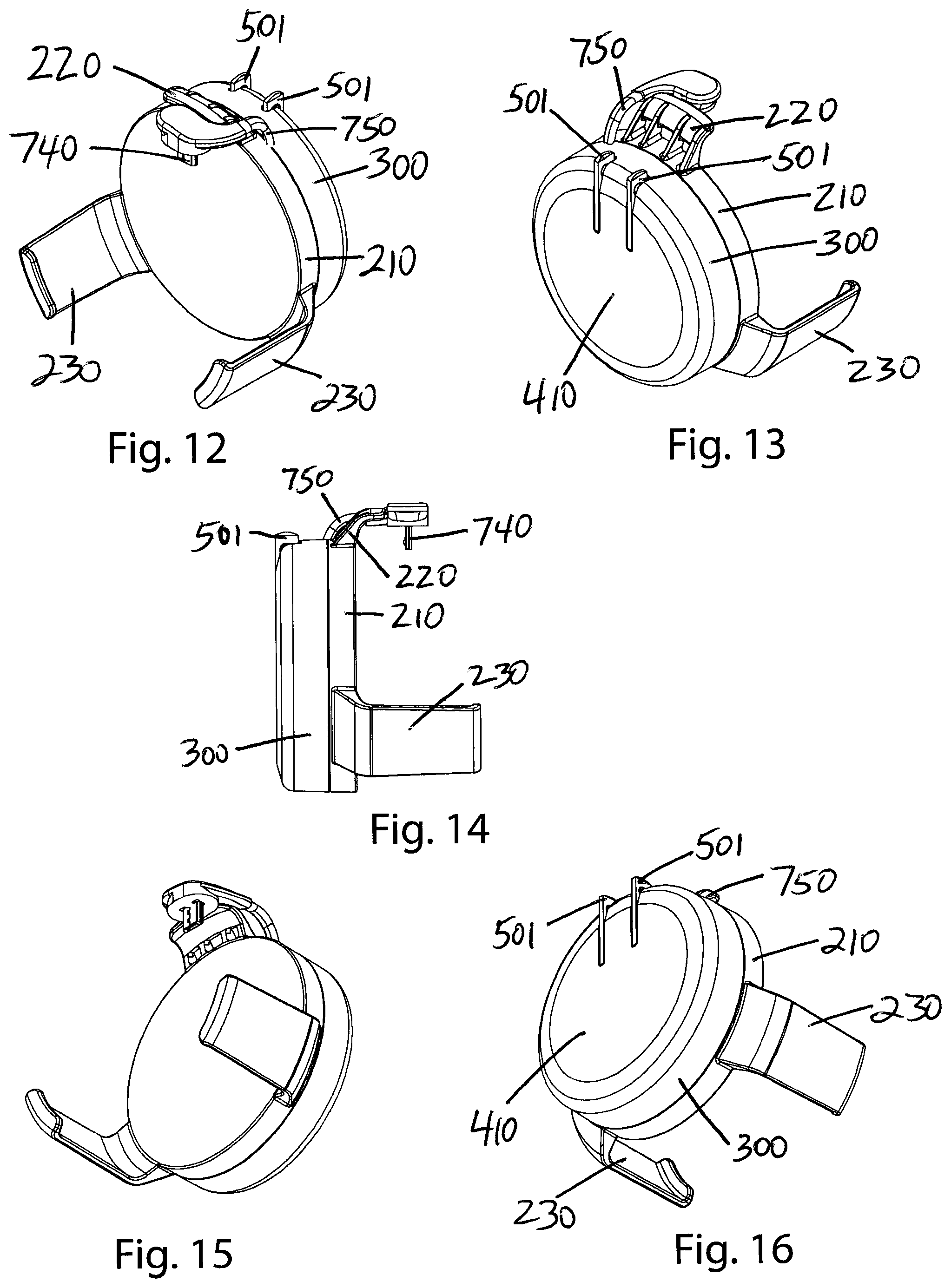
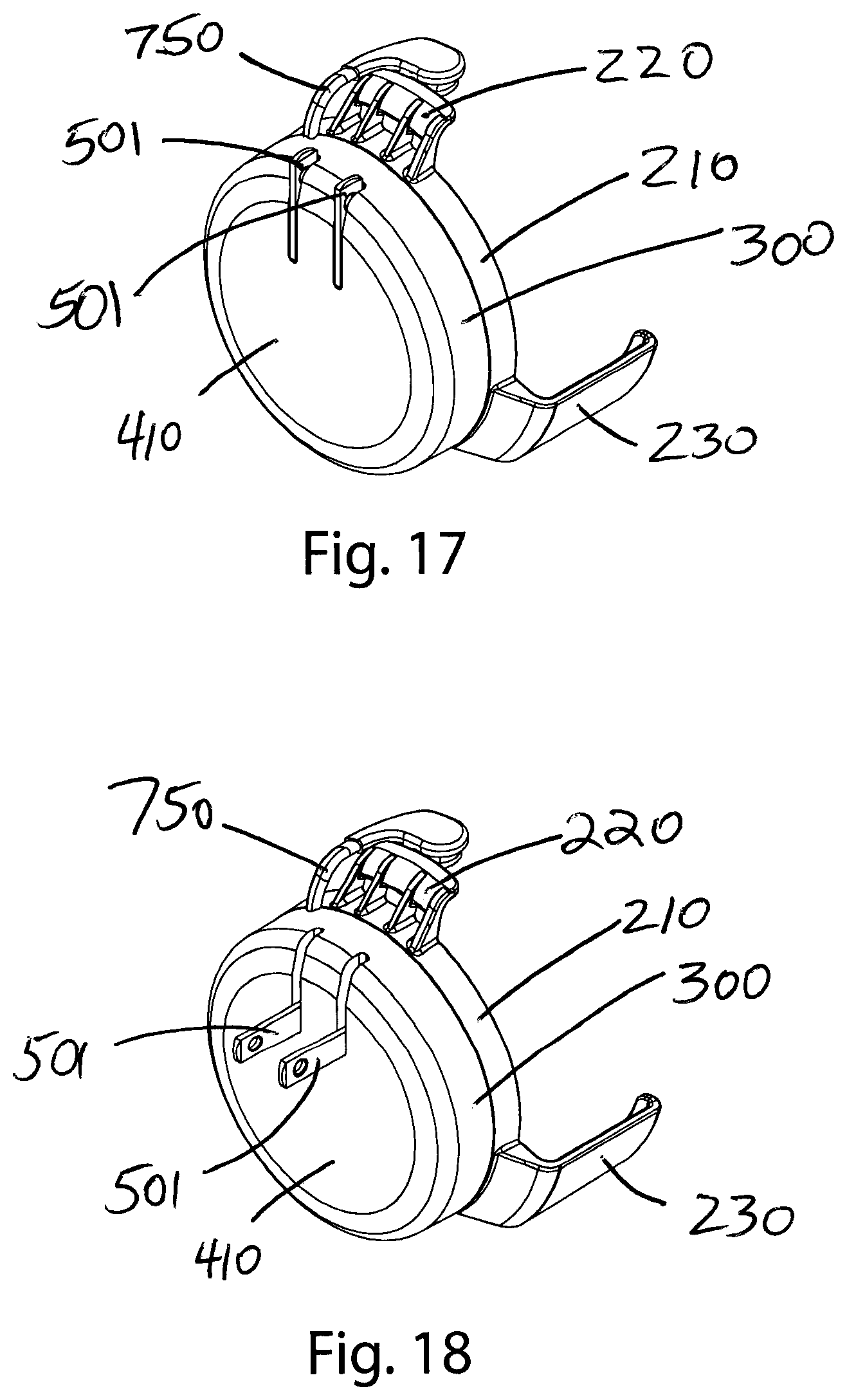
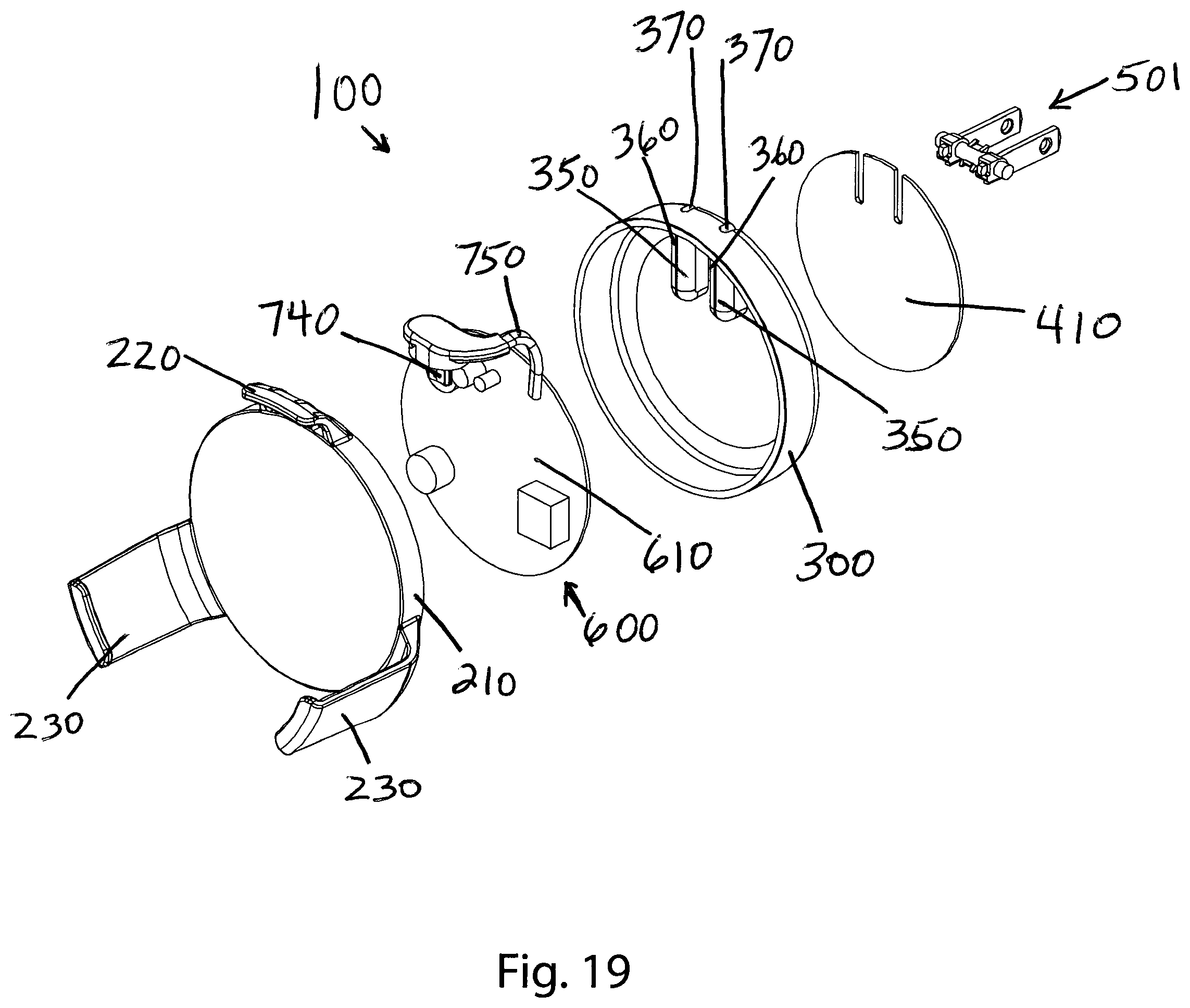
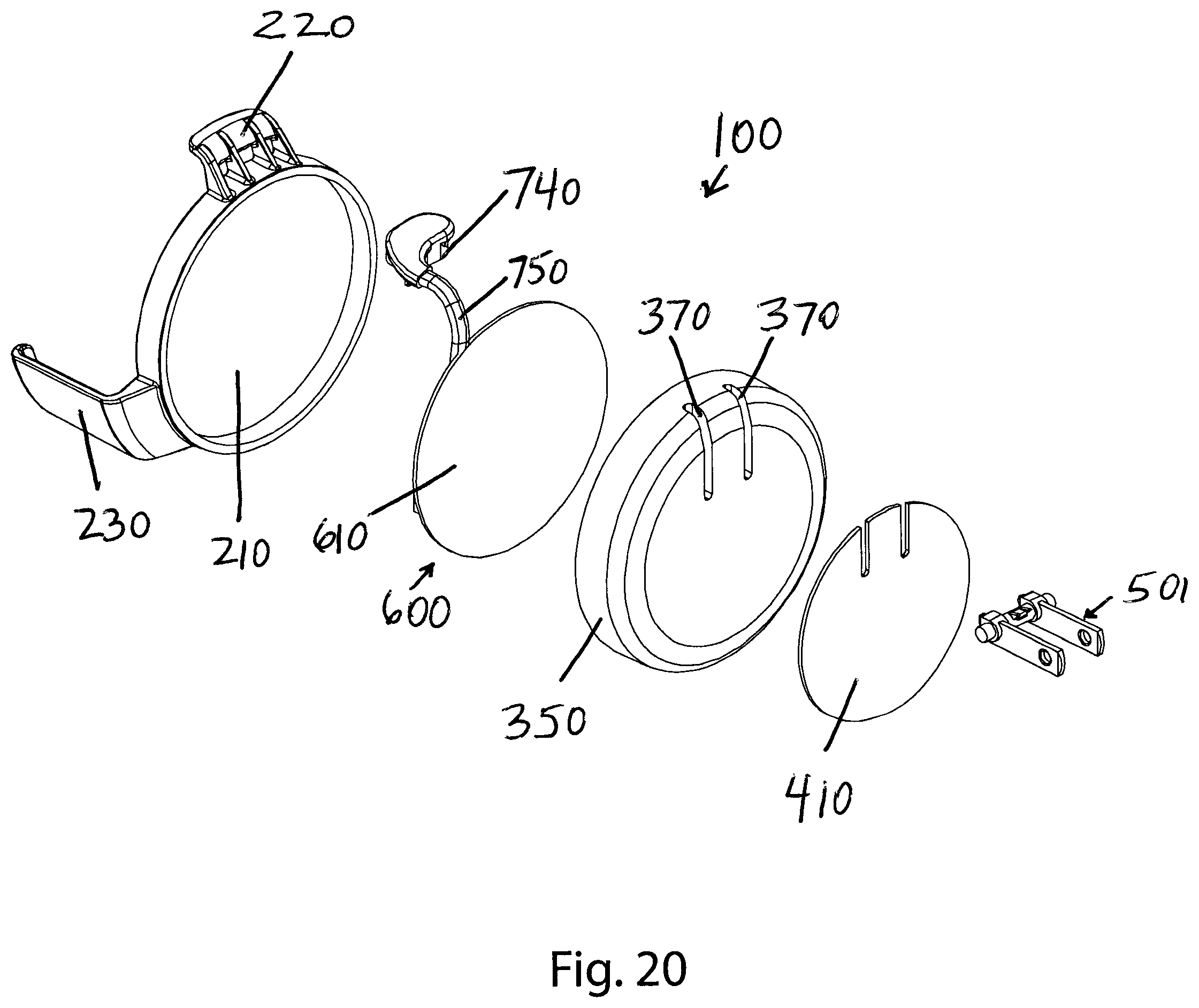
| United States Patent | 10,653,018 |
| Eshelman , et al. | May 12, 2020 |
Independently powered interactive device holder
Abstract
An independently powered interactive device holder is provided. In various embodiments, the holder may comprise a multi-prong bracket configured to securely hold an interactive device. In various embodiments, the holder may also comprise a power supply that is simultaneously connected to an AC plug (which in various embodiments may be foldable between a deployed position and a stowed position) and a tethered power cable and device plug.
| Inventors: | Eshelman; Brandon (Salt Lake City, UT), Bigler; Cameron (Lehi, UT), Boushley; Adam (Midvale, UT) | ||||||||||
|---|---|---|---|---|---|---|---|---|---|---|---|
| Applicant: |
|
||||||||||
| Assignee: | 360 Electrical, L.L.C. (Salt
Lake City, UT) |
||||||||||
| Family ID: | 66096218 | ||||||||||
| Appl. No.: | 16/160,642 | ||||||||||
| Filed: | October 15, 2018 |
Prior Publication Data
| Document Identifier | Publication Date | |
|---|---|---|
| US 20190116678 A1 | Apr 18, 2019 | |
Related U.S. Patent Documents
| Application Number | Filing Date | Patent Number | Issue Date | ||
|---|---|---|---|---|---|
| 62573116 | Oct 16, 2017 | ||||
| Current U.S. Class: | 1/1 |
| Current CPC Class: | G06F 1/26 (20130101); H01R 13/08 (20130101); H01R 31/065 (20130101); H05K 5/0026 (20130101); G06F 1/16 (20130101); H05K 5/0247 (20130101); H04M 1/04 (20130101); H05K 5/0217 (20130101); G06F 1/1632 (20130101); H01R 33/945 (20130101); H05K 7/1427 (20130101) |
| Current International Class: | H05K 5/00 (20060101); H05K 7/14 (20060101); G06F 1/16 (20060101); H01R 31/06 (20060101); H01R 33/945 (20060101); H01R 13/08 (20060101); H05K 5/02 (20060101) |
| Field of Search: | ;439/131,166,171,172 |
References Cited [Referenced By]
U.S. Patent Documents
| D233385 | October 1974 | Friedman |
| D320992 | October 1991 | Jondelius |
| 5628641 | May 1997 | Hahn |
| 6089886 | July 2000 | Mareno |
| 6091611 | July 2000 | Lanni |
| D520448 | May 2006 | Lodato et al. |
| D573947 | July 2008 | Kishimoto et al. |
| D582399 | December 2008 | Venier et al. |
| D634315 | March 2011 | Nousiainen |
| D646674 | October 2011 | Liao |
| D652836 | January 2012 | Voorhees |
| D660306 | May 2012 | Voorhees |
| D686629 | July 2013 | Trinh et al. |
| 8712486 | April 2014 | Sorias |
| D705211 | May 2014 | Huang |
| D707662 | June 2014 | Okita |
| D709066 | July 2014 | Byun |
| D712394 | September 2014 | Booth et al. |
| D745495 | December 2015 | Fereday et al. |
| D753643 | April 2016 | Kim et al. |
| D765064 | August 2016 | Wengreen |
| D775534 | January 2017 | Turksu et al. |
| D777167 | January 2017 | Wengreen |
| 9544005 | January 2017 | Wei |
| 9573532 | February 2017 | Riddiford |
| D790528 | June 2017 | Lindloff |
| D791700 | July 2017 | Loewen |
| D792345 | July 2017 | Loewen |
| 9742885 | August 2017 | Rostami |
| D802529 | November 2017 | Andersson |
| D811334 | February 2018 | Weng et al. |
| 9977462 | May 2018 | Sorias |
| D823841 | July 2018 | Marini |
| 10027149 | July 2018 | Warren |
| 10034398 | July 2018 | Kurian |
| 10050397 | August 2018 | Hetzroni |
| D847789 | May 2019 | Virhia et al. |
| D848412 | May 2019 | Greve et al. |
| D856344 | August 2019 | Wengreen |
| 2006/0171145 | August 2006 | Ford |
| 2015/0072555 | March 2015 | Riddiford |
| 2015/0230351 | August 2015 | Yeo |
| 2016/0380446 | December 2016 | Loewen |
| 2017/0324260 | November 2017 | Rostami |
Other References
|
Power Adapter, Eshelman, Brandon; et al., U.S. Appl. No. 29/533,871, filed Jul. 22, 2015. cited by applicant . Power Adapter, Eshelman, Brandon; et al., U.S. Appl. No. 29/533,872, filed Jul. 22, 2015. cited by applicant . Electrical Cord Plug, Eshelman, Brandon; et al., U.S. Appl. No. 29/582,844, filed Oct. 31, 2016. cited by applicant . Electrical Extension Cord Receptacle End, Eshelman, Brandon; et al., U.S. Appl. No. 29/582,846, filed Oct. 31, 2016. cited by applicant . Electrical Extension Cord Receptacle End, Eshelman, Brandon; et al., U.S. Appl. No. 29/582,848, filed Oct. 31, 2016. cited by applicant . Interactive Device Holder, Eshelman, Brandon; et al., U.S. Appl. No. 29/608,848, filed Jun. 26, 2017. cited by applicant . Power Cord End, Eshelman, Brandon; et al., U.S. Appl. No. 29/608,851, filed Jun. 26, 2017. cited by applicant . Power Cord Cover, Eshelman, Brandon; et al., U.S. Appl. No. 29/615,742, filed Aug. 30, 2017. cited by applicant . Power Cord Cover, Eshelman, Brandon; et al., U.S. Appl. No. 29/615,743, filed Aug. 30, 2017. cited by applicant . Power Strip, Eshelman, Brandon; et al., U.S. Appl. No. 29/662,101, filed Aug. 31, 2018. cited by applicant . Power Strip, Eshelman, Brandon; et al., U.S. Appl. No. 29/662,102, filed Aug. 31, 2018. cited by applicant . Power Strip, Eshelman, Brandon; et al., U.S. Appl. No. 29/662,103, filed Aug. 31, 2018. cited by applicant . Interactive Device Holder, Eshelman, Brandon; et al., U.S. Appl. No. 29/666,680, filed Oct. 15, 2018. cited by applicant . Interactive Device Holder, Eshelman, Brandon; et al., U.S. Appl. No. 29/666,684, filed Oct. 15, 2018. cited by applicant . Interactive Device Holder, Eshelman, Brandon; et al., U.S. Appl. No. 29/666,693, filed Oct. 15, 2018. cited by applicant . Power Cord End With Covered Receptacles, Eshelman, Brandon; et al., U.S. Appl. No. 29/668,061, filed Oct. 26, 2018. cited by applicant . Power Adapter With Covered Receptacles, Eshelman, Brandon; et al., U.S. Appl. No. 29/668,062, filed Oct. 26, 2018. cited by applicant . Power Strip With Covered, Receptacles, Eshelman, Brandon; et al., U.S. Appl. No. 29/668,065, filed Oct. 26, 2018. cited by applicant . Power Strip With Covered Receptacles, Eshelman, Brandon; et al., U.S. Appl. No. 29/668,066, filed Oct. 26, 2018. cited by applicant . Reorientable Electrical Outlet, Gerard, Kimberly R., U.S. Appl. No. 10/996,106, filed Nov. 23, 2004. cited by applicant . Reorientable Electrical Receptacle, Gerard, Kimberly R., U.S. Appl. No. 11/081,282, filed Mar. 16, 2005. cited by applicant . Reorientable Electrical Receptacle, Gerard, Kimberly R., U.S. Appl. No. 11/302,924, filed Dec. 14, 2005. cited by applicant . Reorientable Electric Outlet, Gerard, Kimberly R.; et al., U.S. Appl. No. 09/458,163, filed Dec. 9, 1999. cited by applicant . Reorientable Electrical Receptacle, Gerard, Kimberly R., U.S. Appl. No. 11/778,948, filed Jul. 17, 2007. cited by applicant . Reorientable Electrical Receptacle, Gerard, Kimberly R., U.S. Appl. No. 12/835,722, filed Jul. 13, 2010. cited by applicant . Reorientable Electrical Receptacle, Gerard, Kimberly R., U.S. Appl. No. 13/219,865, filed Aug. 29, 2011. cited by applicant . Reorientable Electrical Receptacle, Gerard, Kimberly R., U.S. Appl. No. 13/541,383, filed Jul. 3, 2012. cited by applicant . Electrical Receptacle Faceplate, Eshelman, Brandon, U.S. Appl. No. 12/141,807, filed Jun. 18, 2008. cited by applicant . Electrical Receptacle Faceplate, Eshelman, Brandon, U.S. Appl. No. 13/043,003, filed Mar. 8, 2011. cited by applicant . Independently Powered Interactive Device Holder, Eshelman, Brandon; et al., U.S. Appl. No. 16/160,642, filed Oct. 15, 2018. cited by applicant . U.S. Appl. No. 29/608,848, Brandon Eshelman, filed Oct. 29, 1974. cited by applicant . United States Patent and Trademark Office; List of references cited by examiner (Form 892) in U.S. Appl. No. 29/666,693 along with copies of all three cited non-patent documents; Oct. 8, 2019; United States Patent and Trademark Office; Alexandria, Virginia; pp. 1-2 are Form 892, p. 3 is the first cited non-patent document, pp. 4-6 are the second cited non-patent document, and pp. 7-10 are the thrid cited non-patent document. cited by applicant. |
Primary Examiner: Chambers; Travis S
Attorney, Agent or Firm: Lauff Law PLLC
Parent Case Text
CROSS-REFERENCE TO RELATED APPLICATIONS
This application claims benefit under 35 U.S.C. .sctn. 119(e) of U.S. Provisional Patent Application No. 62/573,116 filed Oct. 16, 2017.
Claims
The invention claimed is:
1. An interactive device holder comprising: a front housing comprising an upper bracket arm disposed along a central vertical axis of the holder and two lower, laterally opposed, bracket arms, with the upper bracket arm and the lower bracket arms being configured to retain an interactive device; a back housing; a power supply comprising a printed circuit board disposed between the front housing and the back housing; an AC plug housing disposed on the back housing; an AC plug; openings in the back housing configured to accept electrical connections between the AC plug and the printed circuit board; outlets in the back housing through which portions of the AC plug are disposed; and a power cable captured between the front housing and the back housing, the power cable being connected at one end to the power supply and at another end to a plug configured to mate with a power socket of an interactive device.
2. The interactive device holder of claim 1 in which the AC plug is configured to fold into the AC plug housing for storage and rotate out of the AC plug housing for use.
3. The interactive device holder of claim 1 in which the AC plug is fixed into the AC plug housing.
4. An interactive device holder comprising: a front housing comprising a generally planar base, an upper bracket arm disposed along a central vertical axis of the holder, the upper bracket arm having a upper bracket arm tip extending a first height above the base, and two lower, laterally opposed, bracket arms each spaced apart from the upper bracket arm and having a lower bracket arm tip extending a second height above the base, with the second height greater than the first height; a power supply; and a power cable attached at one end to the power supply and at another end to a plug configured to mate with a power socket of an interactive device, the plug being disposed proximal to the upper bracket arm tip at a height above the base that is greater than the first height.
5. The interactive device holder of claim 4 in which the lower bracket arms are rigid.
6. The interactive device holder of claim 4 in which the lower bracket arms are flexible.
7. The interactive device holder of claim 4 further comprising: a back housing; and a printed circuit board disposed between the front housing and the back housing, with the printed circuit board bearing components of the power supply.
8. The interactive device holder of claim 7 further comprising: an AC plug housing disposed on the back housing; an AC plug; openings in the back housing configured to accept electrical connections between the AC plug and the printed circuit board; and outlets in the back housing through which portions of the AC plug are disposed.
9. The interactive device holder of claim 8 in which the AC plug is configured to fold into the AC plug housing for storage and rotate out of the AC plug housing for use.
10. The interactive device holder of claim 8 in which the AC plug is fixed in an extended position into the AC plug housing.
11. The interactive device holder of claim 4 in which the plug is disposed at a height above the base that is less than the second height.
12. The interactive device holder of claim 11 in which the plug is disposed proximal to the vertical axis.
13. An interactive device holder comprising: a front housing comprising a generally planar base, an upper bracket arm, and two lower, laterally opposed, bracket arms each spaced apart from the upper bracket arm and forming gaps that extend to the base; a power supply; and a power cable attached at one end to the power supply and at another end to a plug configured to mate with a power socket of an interactive device, the plug being disposed proximal to the upper bracket arm.
14. The interactive device holder of claim 13 in which the upper bracket arm has a tip extending a first height above the base, and the plug is disposed at a height above the base that exceed the first height.
15. The interactive device holder of claim 13 in which the lower bracket anus are rigid.
16. The interactive device holder of claim 13 in which the lower bracket arms are flexible.
17. The interactive device holder of claim 13 further comprising: a back housing; and a printed circuit board disposed between the front housing and the back housing, with the printed circuit board bearing components of the power supply.
18. The interactive device holder of claim 17 further comprising: an AC plug housing disposed on the back housing; an AC plug; openings in the back housing configured to accept electrical connections between the AC plug and the printed circuit board; and outlets in the back housing through which portions of the AC plug are disposed.
19. The interactive device holder of claim 18 in which the AC plug is configured to fold into the AC plug housing for storage and rotate out of the AC plug housing for use.
20. The interactive device holder of claim 18 in which the AC plug is fixed in an extended position into the AC plug housing.
Description
BACKGROUND
Interactive devices, virtual assistants, artificial intelligence, and smart speakers comprise a rapidly growing area in consumer electronics. It's an area in which hardware, software, and services are expanding day by day. Each new development in hardware typically brings along with it a shortcoming in how certain users want to use the product.
For some of these types of devices, it would be convenient to keep interactive devices powered and within audible voice range, yet free up precious desktop, counter, table, or nightstand space. Users of interactive devices enjoy the benefit that is provided by the experience of interacting with the device, yet also have an increasing desire for the hardware presence to fade more into the background and existing infrastructure of the home.
BRIEF SUMMARY OF THE DISCLOSURE
Various embodiments of this disclosure comprise a multi-prong bracket to securely hold an interactive device, an external power supply (600) that is simultaneously connected to an AC plug (501) (which may be foldable) and a tethered power cable (750) and device plug (740), and a soft adhesive pad (410) for vibration dampening. For various embodiments, the end user would place the interactive device into the multi-prong bracket, attach the tethered cable (750) to the interactive device via the plug (740), and then connect the entire apparatus to a standard AC wall outlet (after unfolding the AC plug (501) if so equipped).
Using some of the embodiments of this disclosure eliminates the need to use a separate external power supply (Example--USB wall charger) and a separate power cable (Example--micro USB cable) and allows the user to have the interactive device itself plugged directly into a standard AC wall outlet and not be forced to have the device exist on desktops, counters, tables, or nightstands.
BRIEF DESCRIPTION OF THE SEVERAL VIEWS OF THE DRAWING
FIG. 1 is a perspective view of a preferred embodiment showing an exemplary interactive device in place.
FIG. 2 is a perspective view of a preferred embodiment showing an exemplary interactive device in place.
FIG. 3 is a perspective view of a preferred embodiment.
FIG. 4 is a perspective view of a preferred embodiment.
FIG. 5 is a side view of a preferred embodiment.
FIG. 6 is a perspective view of a preferred embodiment.
FIG. 7 is a perspective view of a preferred embodiment.
FIG. 8 is a front view of a preferred embodiment.
FIG. 9 is a back view of a preferred embodiment.
FIG. 10 is a top view of a preferred embodiment.
FIG. 11 is a bottom view of a preferred embodiment.
FIG. 12 is a perspective view of a preferred embodiment.
FIG. 13 is a perspective view of a preferred embodiment.
FIG. 14 is a side view of a preferred embodiment.
FIG. 15 is a perspective view of a preferred embodiment.
FIG. 16 is a perspective view of a preferred embodiment.
FIG. 17 is a perspective view of a preferred embodiment with a folding AC plug (501) stowed.
FIG. 18 is a perspective view of a preferred embodiment with a folding AC plug (501) deployed.
FIG. 19 is a perspective view of a preferred embodiment with various structures separated and shown in an exploded view.
FIG. 20 is a perspective view of a preferred embodiment with various structures separated and shown in an exploded view.
DESCRIPTION OF VARIOUS EMBODIMENTS
The terminology used herein is for the purpose of describing particular embodiments only and is not intended to be limiting. As used herein, the term "and/or" includes any and all combinations of one or more of the associated listed items. As used herein, the singular forms "a," "an," and "the" are intended to include the plural forms as well as the singular forms, unless the context clearly indicates otherwise. It will be further understood that the terms "comprises" and/or "comprising," when used in this specification, specify the presence of stated features, steps, operations, elements, and/or components, but do not preclude the presence or addition of one or more other features, steps, operations, elements, components, and/or groups thereof.
Unless otherwise defined, all terms (including technical and scientific terms) used herein have the same meaning as commonly understood by one having ordinary skill in the art to which this disclosure belongs. It will be further understood that terms, such as those defined in commonly used dictionaries, should be interpreted as having a meaning that is consistent with their meaning in the context of the relevant art and the present disclosure and will not be interpreted in an idealized or overly formal sense unless expressly so defined herein.
In describing various embodiments, it will be understood that a number of techniques and steps are disclosed. Each of these has individual benefit and each can also be used in conjunction with one or more, or in some cases all, of the other disclosed techniques. Accordingly, for the sake of clarity, this description will refrain from repeating every possible combination of the individual steps in an unnecessary fashion. Nevertheless, the specification and claims should be read with the understanding that such combinations are entirely within the scope of the disclosure and the claims.
The present disclosure is to be considered as an exemplification of various embodiments, and is not intended to limit the scope of the claims or the disclosure to the specific embodiments illustrated by the figures or description below. FIGS. 1-20 illustrate a currently preferred embodiment.
FIGS. 1 and 2 illustrate an interactive device (1) held by two lower, laterally opposed, bracket arms or prongs (230) and one upper bracket arm or prong (220) located along a central vertical axis. In other embodiments, the interactive device (1) may be held by one lower bracket arm or prong (230) located along a central vertical axis and two upper, laterally opposed, bracket arms or prongs (220). In other embodiments, the interactive device (1) may be held by two upper, laterally opposed, bracket arms (220) and two lower, laterally opposed, bracket arms (230). In other embodiments, the number and arrangement of bracket arms or prongs may vary provided that that the resulting support for the device (1) being held is sufficient. The number and arrangement of bracket arms or prongs preferably will be tailored to the particular interactive device (1) to be held, but universal designs may also be used.
In the previously described embodiments the bracket arms may be rigidly attached to the front housing (210) as shown in FIGS. 1-17, or they may be hinged or spring loaded. In some embodiments, various combinations of rigidly attached and hinged or spring loaded arms may be deployed. The bracket arms may be rigid or may have some flexibility. In some embodiments, various combinations of rigid and flexible arms may be deployed. In other embodiments, the interactive device (1) may be held by a sleeve (290) of various shapes that can be stretched over the interactive device (1) to keep it attached to the front housing (210), for example a sleeve (290) comprising soft rubber or other elastic material.
In other embodiments, the interactive device (1) may be held by a lower envelope (270) that could be a half circle, rectangle, square, or other shape suitable to cradle the interactive device (1). In these types of embodiments, the interactive device (1) might slide down from above into the lower envelope (270) which would keep it attached to the front housing (210) but would only constrain the interactive device (1) on the lower portion, leaving the upper portion unrestrained. In other embodiments, the interactive device (1) may be captured by a fully encased enclosure (280) that closes with a sliding or hinged front door (285).
FIGS. 1 and 2 also illustrate an interactive device (1) connected to an interactive device holder (100) by a tethered power cable (750) that is mechanically and rigidly captured between the front housing (210) and the back housing (300) of the device holder (100). In other embodiments, the interactive device (1) may be connected to the powered device holder (100) by a rigid and hinged power connector (760) that is attached to either one or both front housing (210) or back housing (300) of the device holder (100). In other embodiments, the interactive device (1) may be connected to the powered device holder (100) by a magnetic power connection (730). In other embodiments, the interactive device (1) may be connected to the powered device holder (100) by a power connection (720) that is itself built into the mechanism that is grasping and retaining the interactive device (1) itself. In other embodiments, the power cable (750) may be attached to a power supply (600) with a detachable connector (755) in the housing. Regardless of the configuration of the power cable (750) or other power connection, a plug (740) compatible with the interactive device (1) may be deployed at the end distal from the power supply (600). In some embodiments, the plug (740) is connected to the power supply (600) via individual wires (770), in other embodiments a ribbon cable (790) may be used, while in still other embodiments a printed circuit substrate (780) may be used. If a printed circuit substrate (780) is used, it generally will be flexible for embodiments with tethered power cables (750) or removable power cables (750), but in embodiments using a rigid and hinged power connector (760) the substrate (780) may be rigid except at the hinge (765).
In the embodiment depicted in FIGS. 3-7, the front housing (210) may be configured with a generally planar base (215). As illustrated for this depicted embodiment, an upper bracket arm (220) may have an upper bracket arm tip (225) extending a first height above the base (215), and a pair of lower bracket arms (230) may have lower bracket arm tips (235) extending a second height above the base (215). In this depicted embodiment, the second height is greater than the first height, and plug (740) is disposed proximal to the upper bracket arm tip (225) at a height above the base (215) that is greater than the first height.
In the embodiment depicted in FIGS. 17 and 18, a folding AC plug (501) provides power to the interactive device holder (100) by way of plugging the AC plug (501) into a standard wall outlet. The folding AC plug (501) can either be deployed in a horizontal fashion when it's ready to be plugged into a wall outlet or it can be stowed in a vertical fashion for storage or travel use. The folding AC plug (501) may be configured to fold up for storage, or in other embodiments to fold down for storage. In this embodiment, the AC plug (501) is the sole element connecting the device holder (100) to the wall outlet. In other embodiments, the AC plug (501) may be used in conjunction with a mounting screw (130) that passes through the entire device holder (100) to mechanically fasten the device holder (100) to the wall outlet. In other embodiments, the AC plug (501) may also be fixed in the horizontal position.
FIG. 17 shows the folding AC plug (501) cutting into outlets (370) on a circular plane on the back housing (300) of the device holder (100). In this embodiment, this circular plane comprises a soft adhesive pad (410) for vibration dampening. In other embodiments, the reference plane could take on other shapes, as could the soft adhesive pad (410) or pads.
FIGS. 19 and 20 illustrate two opposing exploded assembly views of a preferred embodiment of a powered interactive device holder (100). In this embodiment, the powered interactive device holder (100) comprises a front housing (210), a printed circuit board (610) with tethered power cord (750), a back housing (300), a soft adhesive pad (410), and a folding AC plug (501). The printed circuit board (610) with tethered power cable (750) is assembled in between the front housing (210) and back housing (300), which are fastened together via fasting means (150) such as screws, adhesive, welding, snaps, or other retaining arrangements know in the art. The folding AC plug (501) is mechanically assembled onto the back housing (300) and then electrically connected, through openings (360) in the back housing (300), to the printed circuit board (610). The soft adhesive pad (410) is attached to the outward face of the back housing (300).
In some embodiments, the interactive device holder (100) may comprise plural bracket arms (e.g., 220, 230) configured to retain an interactive device (1), an AC plug (501), a power supply (600), a plug (740) configured to mate with a power socket of an interactive device (1), and a connection (e.g., a power cable (750) or a conduit (760), which may comprise wires (770), a ribbon cable (790), a substrate (780), any other conductive path, or any combination thereof, a magnetic connection (730), or a connection (720) integral with a structure holding the interactive device) between the power supply (600) and the plug (740). In some embodiments, the interactive device holder (100) may comprise a cradle (260) configured to retain an interactive device (1), either in lieu of or in addition to one or more bracket arms.
In some embodiments, the AC plug (501) may be configured to fold into a housing (350) of the interactive device holder (100) for storage and rotate out of the housing for use.
In some embodiments, a connection between the power supply (600) and the plug (740) may comprise a power cable (750) tethered to a housing of the interactive device holder (100). In some embodiments, the power connection between the power supply (600) and the plug (740) may comprise a rigid conduit (760) hinged by a hinge (765) at a housing of the interactive device holder (100), either in lieu of or in addition to a power cable (750).
* * * * *
D00000

D00001

D00002

D00003

D00004

D00005

D00006

D00007

XML
uspto.report is an independent third-party trademark research tool that is not affiliated, endorsed, or sponsored by the United States Patent and Trademark Office (USPTO) or any other governmental organization. The information provided by uspto.report is based on publicly available data at the time of writing and is intended for informational purposes only.
While we strive to provide accurate and up-to-date information, we do not guarantee the accuracy, completeness, reliability, or suitability of the information displayed on this site. The use of this site is at your own risk. Any reliance you place on such information is therefore strictly at your own risk.
All official trademark data, including owner information, should be verified by visiting the official USPTO website at www.uspto.gov. This site is not intended to replace professional legal advice and should not be used as a substitute for consulting with a legal professional who is knowledgeable about trademark law.